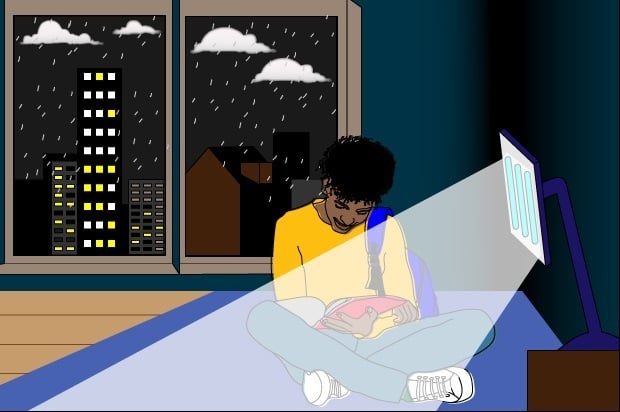Seasonal Affective Disorder (SAD)
SAD stands for Seasonal Affective Disorder. Although most people feel a little down when winter hits, 6% of the population are affected by SAD with symptoms severe enough to disrupt their lives.

Most of us are affected by the change of seasons, but SAD sufferers are unable to function normally
Most of us are affected by the change of the seasons – who hasn’t found that everyone is nicer, and in a much better mood in the blazing sunshine? It’s normal, in fact, to feel more energetic and upbeat in the summer, and more lethargic in the winter. But Seasonal Affective Disorder (SAD) is form of depression and mental health disorder which is experienced when there are large changes in the weather and number of daylight hours – normally in the winter. If you think you might be affected, read on to understand more.
What is Seasonal Affective Disorder?
It is common for dull weather and short daylight hours to dampen your mood. Seasonal Affective Disorder (or SAD) is when the winter weather affects your mood so much that you feel depressed.
What are the symptoms?
- Sleep problems: oversleeping (but not feeling refreshed) and difficulty staying awake, or in some cases disturbed sleep and early morning wakening
- Lethargy: too tired to cope, everything becomes an effort
- Overeating: craving for carbohydrates and sweet foods leading to weight gain
- Depression: feelings of despair, misery, guilt, anxiety, hopelessness, normal tasks become frustratingly difficult
- Social problems: avoiding family and friends, irritability, inability to handle stress, feeling emotionally numb, loss of libido
- Physical symptoms: often joint pain or stomach problems and a lowered resistance to infection
- Behavioural problems: extemes of mood and short periods of overactivity in spring and autumn.
When does it start?
The symptoms tend to start around September and can last until April. They are at their worst in the darkest months.
What causes it?
The exact causes of SAD are unclear – but it is said to stem from the lack of bright light (daylight and sunlight) in winter, causing a biochemical imbalance in the brain. Some people need a lot more light than others for their body to function normally. When light hits the backs of our eyes, messages are sent to our brain which control sleep, appetite, sex drive, temperature, mood and activity. So when the levels of light are low, these functions may slow down.
Who does it affect?
Roughly 2% of the population of Northern Europe suffer badly, with many more (10%) suffering milder cases. Across the world the incidence increases with distance from the equator, except where there is snow on the ground when it becomes less common. More women than men are diagnosed as having SAD. Children and adolescents are also vulnerable.
What treatment is there for SAD?
A perfect cure is going to a brightly lit climate, whether skiing or somewhere hot (any excuse for a holiday!)
Otherwise, exposure to bright light every day by using a light box or a similar bright light therapy device may help. For most people, sitting in front of a light box for between 15 and 45 minutes a day (not staring at the light but allowing it to reach their eyes) will be sufficient to alleviate the symptoms. Some sufferers also need treatment with antidepressant medication.
Should I talk to my doctor?
Yes. They can tell you where the NHS specialist SAD clinics are in the UK, and help you seek treatment.
Next Steps
- Mind offers advice and support to people with mental health problems. Their helpline runs nine to six from Monday to Friday. 0300 123 3393
- SANE offers support and information to people affected by mental illness. Call their helpline on 0300 304 7000, open 4:30pm - 10:30pm every day.
- Chat about this subject on our Discussion Boards.
By
Updated on 22-Dec-2015
No featured article














